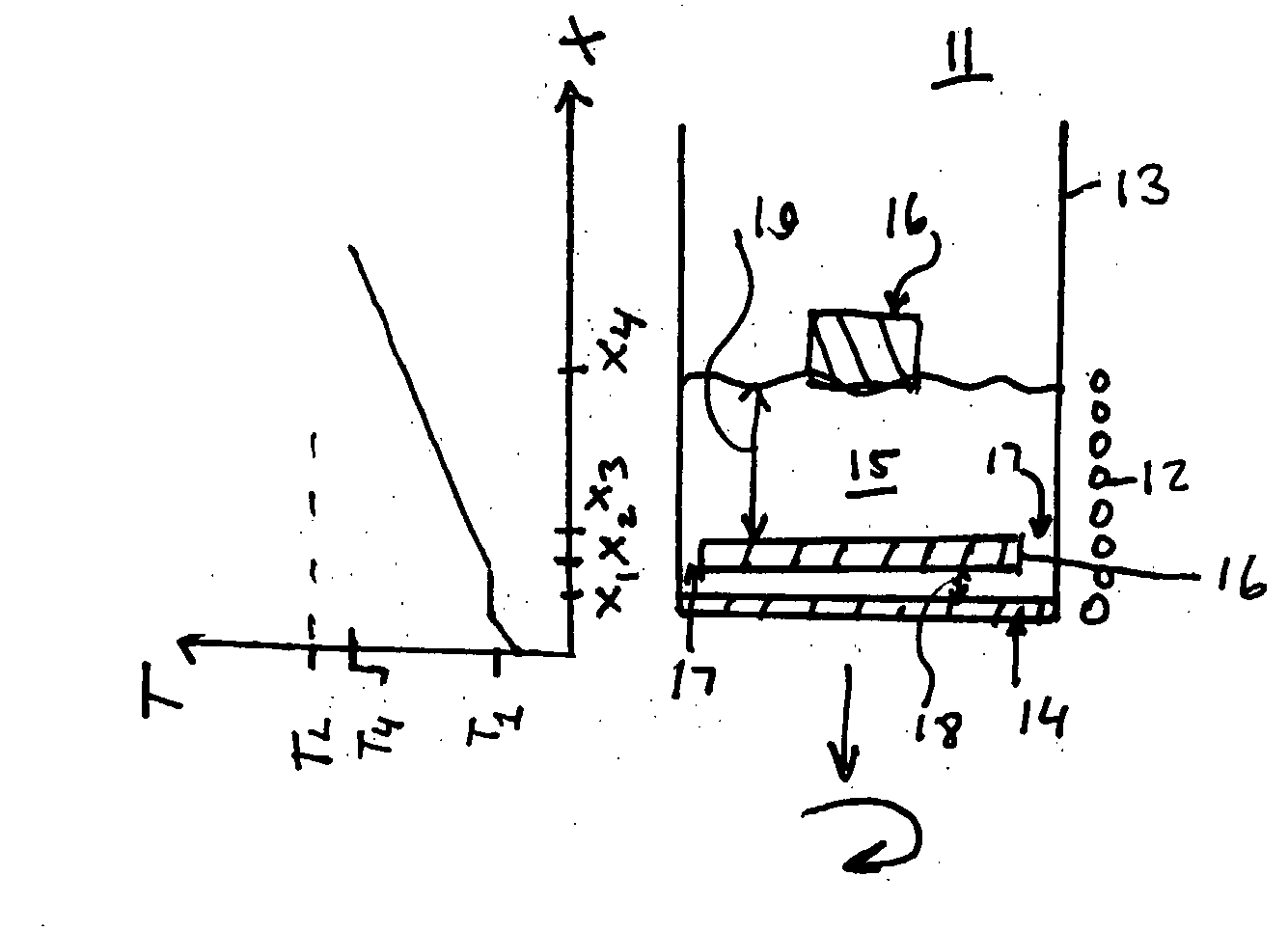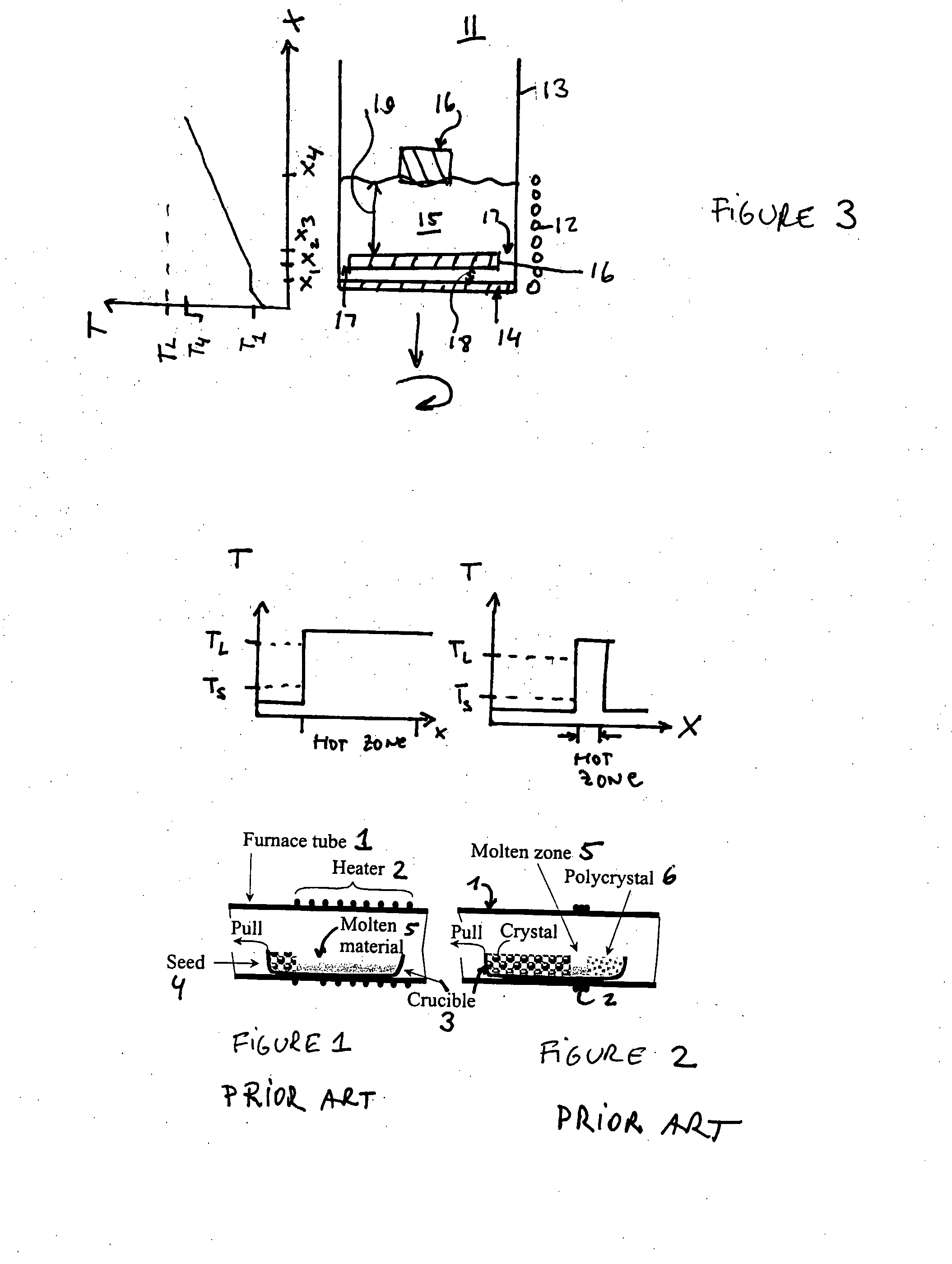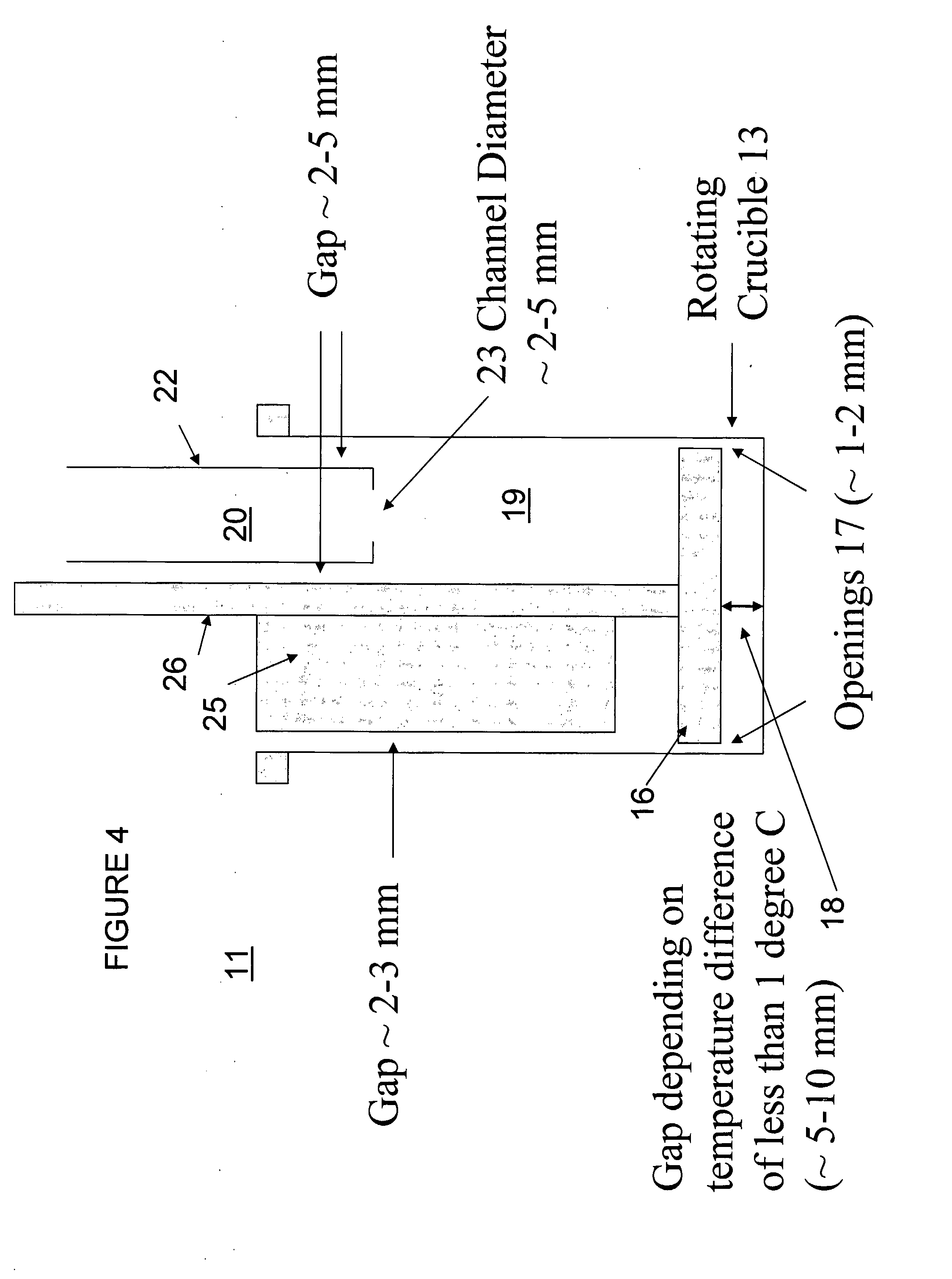Method and Apparatus for Growth of Multi-Component Single Crystals
a single crystal, multi-component technology, applied in the direction of oxide conductors, conductors, non-metal conductors, etc., can solve the problems of high cost of epitaxial technology, high defect density, miscibility gaps,
- Summary
- Abstract
- Description
- Claims
- Application Information
AI Technical Summary
Problems solved by technology
Method used
Image
Examples
example 1
[0081]A commercial InSb oriented seed of 5 mm in diameter and 3 cm in length was inserted into a quartz (silica) crucible designed to grow single crystals using a vertical Bridgman technique. The crucible was filled with InSb polycrystals and LiCl—KCl alkali halide salt for melt encapsulation and coating the crucible walls. The crucible was placed in the crystal growth chamber along with other components such as solute feeder and stirrer-thermal barrier plate structure. The solute feeder basket was filled with a polycrystalline GaSb rod. The crucible with InSb as well as the other solute feeder basket and other components were placed outside the heater zone of the furnace.
[0082]The growth chamber was evacuated to 1 millitorr of vacuum and flushed with inert gas such as argon or hydrogen several times before filling the chamber with the inert gas. In this example, argon was used as the inert gas and a pressure of approximately 1.2 atmosphere was used during the entire growth.
[0083]T...
example 2
[0093]In example 2, a similar growth configuration was used to example 1, except that temperature gradient in the growth melt was twice of that in example 1. This is due to higher set-point (maximum) temperature being 680° C. instead of 625° C. As shown in FIG. 14, the radial gallium composition fluctuates more than in example 1.
example 4
[0095]In example 4, a similar growth configuration was used to example 1, except that there was no ACRT mixing of the growth melt. The temperature gradient was exactly the same as in example 1. As shown in FIG. 16, the radial gallium profile is significantly flat except for few discrete locations where it is believed that inclusions were located due to non-mixing of the growth melt.
[0096]Examples 5-7 illustrate methods of forming boules containing regions, such as about 0.5 to about 50 micron thick regions, with different characteristics stacked in the axial direction of the boule by using plural solute feeder vessels 120 containing solutes with different characteristics.
PUM
| Property | Measurement | Unit |
|---|---|---|
| temperature | aaaaa | aaaaa |
| temperature | aaaaa | aaaaa |
| diameter | aaaaa | aaaaa |
Abstract
Description
Claims
Application Information
 Login to View More
Login to View More - R&D
- Intellectual Property
- Life Sciences
- Materials
- Tech Scout
- Unparalleled Data Quality
- Higher Quality Content
- 60% Fewer Hallucinations
Browse by: Latest US Patents, China's latest patents, Technical Efficacy Thesaurus, Application Domain, Technology Topic, Popular Technical Reports.
© 2025 PatSnap. All rights reserved.Legal|Privacy policy|Modern Slavery Act Transparency Statement|Sitemap|About US| Contact US: help@patsnap.com



